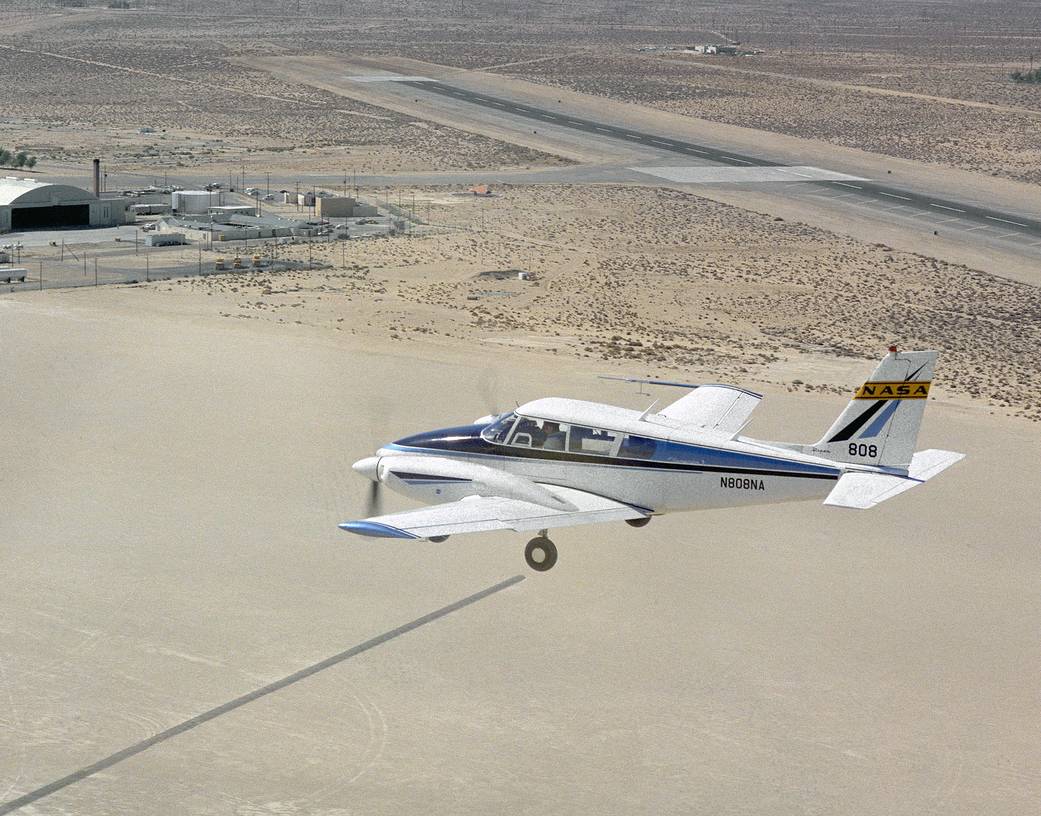ECN-2845
Dryden Flight Research Center’s Piper PA-30 Twin Comanche, which helped validate the RPRV concept, descends to a remotely controlled landing on Rogers Dry Lake, unassisted by the onboard pilot.
A Piper PA-30 Twin Comanche, known as NASA 808, was used at the NASA Dryden Flight Research Center as a rugged workhorse in a variety of research projects associated with both general aviation and military projects.
In the early 1970s, the PA-30, serial number 301498, was used to test a flight technique used to fly Remotely Piloted Research Vehicles (RPRV’s). The technique was first tested with the cockpit windows of the light aircraft blacked out while the pilot flew the aircraft utilizing a television monitor which gave him a “pilot’s eye” view ahead of the aircraft. Later pilots flew the aircraft from a ground cockpit, a procedure used with all RPRV’s. TV and two-way telemetry allow the pilot to be in constant control of the aircraft. The apparatus mounted over the cockpit is a special fish eye lens camera, used to obtain images that are transmitted to the ground-based cockpit. This project paved the way for sophisticated, highly successful research projects involving high risk spin, stall, and flight control conditions, such as the HiMAT and the subscale F-15 remotely piloted vehicles.
Over the years, NASA 808 has also been used for spin and stall research related to general aviation aircraft and also research to alleviate wake vortices behind large jetliners.October 8, 1971NASA Photo› Read PA-30 Project Description
2 min read




























